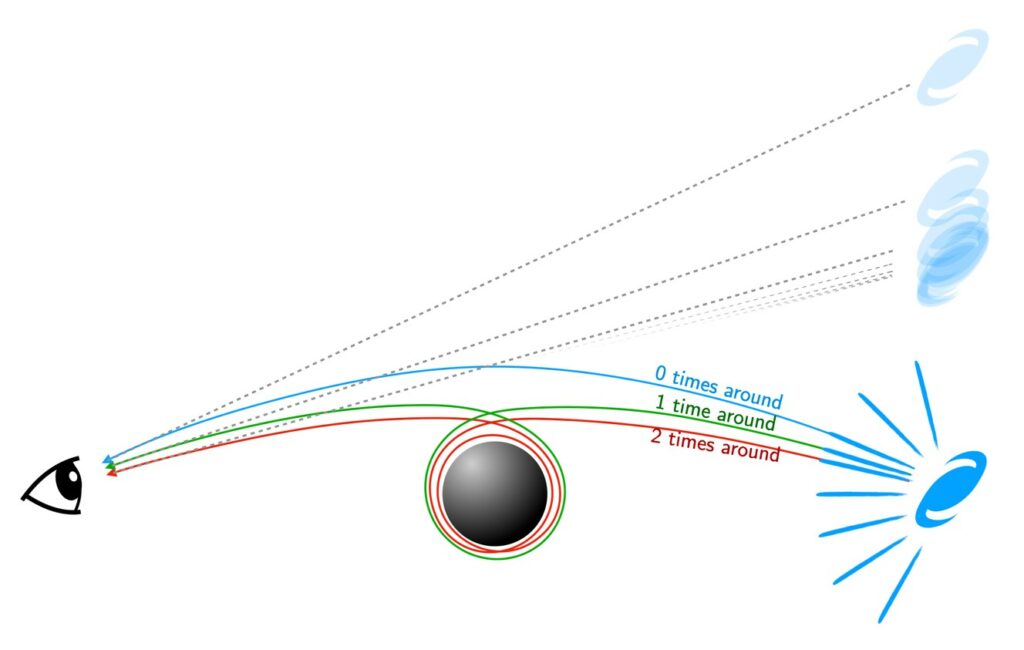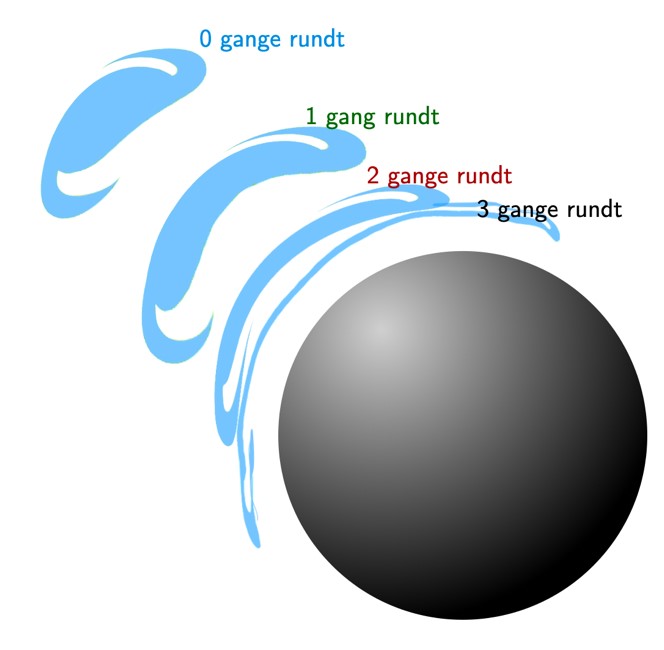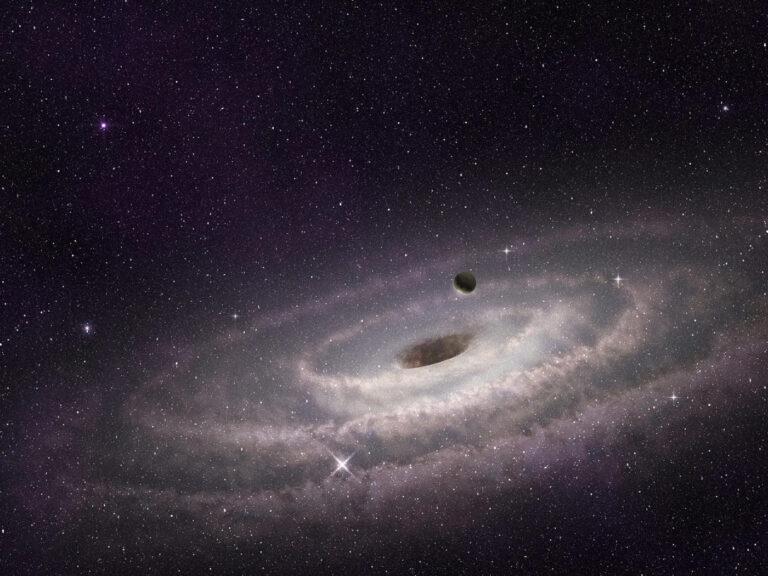Danish Student Uncovers How Light from Distant Galaxies Creates Multiple Images Near Black Holes
Discover Why Light Near Black Holes Creates Multiple Galaxy Images and How Rotating Black Holes Alter This Effect
Know why light from distant galaxies forms multiple images near black holes and how rotating black holes can affect it. Optical should be able to bend around black holes and see multiple images of a galaxy orbit around. New work illuminates this event, showing that when black holes rotate, they alter the intervals between these images, which may help explain gravity.
Studying these effects allows the scientists to confirm hypotheses regarding black holes and their impact on light. After reading the article, a Reddit user received over 63 upvotes with this question: >This seems to imply the time delay between pictures being changed, let alone if the object in question is a supernova: how long between picture 1 and picture 500?
Yes, the interval depends on the given mass/size of the event horizon but could someone purposely post an ‘order of magnitude’. Black holes are likely to be familiar with, they are certain areas of space where gravity becomes so extreme even light cannot escape.
You could also know that space and time are different near black holes and causes space to twist. Due to the strong gravitational pull around a black hole, space curves to an extent that light is deflected and depending on the proximity of a black hole light can be curved enough to encircle it.
Thus, if we are looking at some distant galaxy or any other object, it is possible that we may actually see several images of the same galaxy which are more and more distorted.
Galaxies in Multiple Versions

The mechanism is illustrated in the figure below: There is a galaxy in the distant universe that gives out light in every direction—some of the light brushes past the black hole and is bent a little while other light goes in the proximity of the black hole and orbits it once before getting to us. The more one approaches the black hole the more versions of the galaxy it is possible to observe.
The time between images is based on Einstein’s theory of relativity: how much closer do we need to look to see the next image? This has been known for over 40 years: it is about 500,000,000 times closer (actually, it is 2 times the value of the exponential function of two pi: 2e²π).
Determining this is inherently so challenging that, until the present day, we can’t say we have both full mathematical and physical insight into why it happens with this particular factor. Nonetheless, Albert Sneppen, a master’s student at the Cosmic Dawn Center—a part of the Niels Bohr Institute and Technical University of Denmark’s space department of DTU Space—has now illuminated the issue.
“It is really nice to know why such images recur in such a graceful way,” Sneppen said and added that it also creates new possibilities to check the theories on gravity and black holes.
Not only does it feel good to prove something mathematically; it helps put us on the track of comprehending this marvelous occurrence. 500 is directly related to the blacks and the manner in which the gravity works, therefore, these repeated images act like a goldmine that can be used to test and further the knowledge on gravity.
Spinning Black Holes

Sneppen’s method introduces a new feature: It can be applied also in the case of rotating black holes which are, of course, not trivial. However, every black hole spins, despite the centripetal force which otherwise would disintegrate it.
When a black hole turns around many times, more precisely when its angular momentum is high, the distance where the next image lives is substantially lesser thus: When = 500 ̊, 50 ̊, 5 ̊, or 2 ̊.
As seen in the figure on the right, due to the fact that much nearer to the black hole, for each new image one has to observe 500 times closer to the black hole, all the images come in a very short space of time compress into a single annular image. In practice, these multiple images are impossible to discern because the ‘dynamic scenes’ are constantly changing and altering the relationships between images. However observations show that in the case of rotating black holes, there are many ‘extra’ images with larger distances between them, so it may be possible to check this theory observationally in the near future. This would have given an understanding not only of the black holes but also of the galaxies behind them.
In case of movement of light around the black hole the path around the black hole must increase the time taken in terms of observers, making the images ‘delays. ’ For instance, if a star in distant galaxy developed as a supernova then supernova can be witnessed multiple times.
Albert Sneppen’s article has just been accepted for publication in the journal Scientific Reports, and can be read here: Divergent reflections around the photon sphere of a black hole.




0 Comments